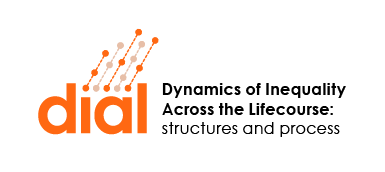The extent to which siblings resemble each other measures the omnibus impact of family background on life chances. We study sibling similarity in cognitive skills, school grades, and educational attainment in Finland, Germany, Norway, Sweden, the United Kingdom, and the United States. We also compare sibling similarity by parental education and occupation within these societies. … Read more
Sibling similarity in education across and within societies
Does re-partnering behavior spread among former spouses?
This study investigates whether divorcees who re-partner play a role in their former spouse’s decisions to do the same. The researchers used administrative data from Statistics Netherlands to look at divorcees who remarried or lived with a new partner and the likelihood of their former spouse doing the same soon after and showed this was … Read more
Why do lower educated people separate more often? Life strains and the gradient in union dissolution
This study finds that lower educated couples are more likely to separate than their better educated peers, because they experience strain across multiple aspects of their life, including work, finance, social relationships, health and housing. The research shows that lower educated couples are not in themselves more likely to separate, but rather face a range … Read more
Uncovering social stratification: Intersectional inequalities in work and family life courses by gender and race
This paper looks at the different privileges and constraints that men and women face as they juggle the demands of jobs and careers with having a family. Using data from the National Longitudinal Survey of Youth (NLSY79), the researchers examine the gender and race inequalities facing people in the United States and show that, in … Read more
From unidimensional to multidimensional inequality: a review
We review results concerning the representation of partial orders of univariate distributions via stochastic orders and investigate their applications to some classes of stochastic dominance conditions applied in inequality and welfare measurement. The results obtained in an unidimensional framework are extended to multidimensional analysis. We discuss difficulties arising from aggregation of multidimensional distributions into synthetic … Read more
Editorial: Introduction to “Mechanisms of educational stratification”
A large body of literature has been devoted to the question of how the design of educational systems influences the formation and intergenerational reproduction of social inequality. An important feature of educational systems is their level of educational stratification or differentiation, i.e. the separation of students into separate groups, tracks or streams for instructional purposes … Read more
Understanding the effects of Covid-19 through a life course lens
The Covid-19 pandemic is shaking fundamental assumptions about the human life course in societies around the world. In this essay, we draw on our collective expertise to illustrate how a life course perspective can make critical contributions to understanding the pandemic’s effects on individuals, families, and populations. We explore the pandemic’s implications for the organization … Read more
Optimal taxes on capital in the OLG model with uninsurable idiosyncratic income risk
We characterize the optimal linear tax on capital in an Overlapping Generations model with two period lived households facing uninsurable idiosyncratic labor income risk. The Ramsey government internalizes the general equilibrium effects of private precautionary saving on factor prices and taxes capital unless the weight on future generations in the social welfare function is sufficiently … Read more
The lost ones: The opportunities and outcomes of white, non-college-educated Americans born in the 1960s
White, non-college-educated Americans born in the 1960s face shorter life expectancies, higher medical expenses, and lower wages per unit of human capital compared with those born in the 1940s; men’s wages declined more than women’s. After documenting these changes, we use a life-cycle model of couples and singles to evaluate their effects. The drop in … Read more
Sources of U.S. wealth inequality: Past, present, and future
The distribution of wealth in most countries for which there is reliable data is strikingly uneven. There is also recent work suggesting that the wealth distribution has undergone significant movements over time, most recently with a large upward swing in dispersion in several Anglo-Saxon countries (Piketty 2014; Saez and Zucman 2016). For example, according to … Read more
